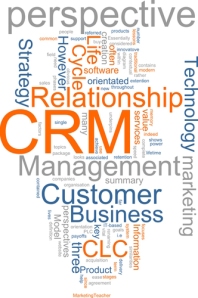 My colleague, Mark Robertson, just wrote an interesting blog on Welcome Email Programs. I thought I would add to this by discussing the very first point – growing that email list.
My colleague, Mark Robertson, just wrote an interesting blog on Welcome Email Programs. I thought I would add to this by discussing the very first point – growing that email list.
With that in mind, here’s my checklist of things to consider when growing an opt-in email list ….plus a few additional comments/opinions:
What are you looking to achieve – quality or quantity?
Put simply, is it double opt-in or single opt-in?
• Double opt-in: As Mark suggests, best practice would be to take a double opt-in approach when capturing data. Anyone within the industry would have a hard time arguing against this, yet this isn’t the norm as it isn’t a legal requirement.
• Single opt-in: The most common method used, yet all too often people are simply collecting with growth targets in mind and not really thinking about why? Write down the objective.
What are recipients opting-in for?
There are two quick wins here – point of sign-up and welcome program.
• Sign-up: We hear people talk about ‘competing within the inbox arena’, so let subscribers know what they can expect to receive straight away (e.g. newsletters, promotional offers, both, …). I’ve seen examples of some retailers actually giving a click option to see an example newsletter (e.g. www.elc.co.uk/SignUp.php). No confusion here.
• Welcome Program: A ‘triple-whammy’ here. A chance to thank them for joining your email list, inform them about what they can expect to hear and, most importantly, your first opportunity to get a recipient engaged.
What to capture?
A few things to cover here. The reality is it might be an area to test – email only vs. full data capture. Things to consider would be:
• Industry: B2B would differ from B2C (e.g., organisation vs. post code).
• Types of Data: If you stick to the types of data that can be used for personalisation, I don’t think you can go too far wrong. If you’re not at that stage of your contact plan, then there’s no need to worry, collect that information by way of ongoing process (e.g., reintegration of click behaviour, preference centre/edit profile).
• Type of Communication: If you perform other forms of marketing communication (e.g., mobile), capture that data BUT be sure to give them that preference as an option.
• Frequency: I’ve heard it discussed that you should give a recipient a choice of how often they wish to hear from you? A good idea in theory, yet how would they know? That’s not to say it’s not a good idea, yet it might work better to have a preference page link within the email so this can be done after they gain a feeling for your contact frequency.
• Sharing Data: The recipient has opted to receive newsletters from your brand. Make it absolutely clear if you intend to share their data with ‘trusted 3rd party partners’. If not, both brands will suffer, yours most.
Where else can I capture data?
Numerous places, write them all down and I think you’ll be pleasantly surprised:
• Online: Both new and existing customers. If they have to sign up to receive these emails, make sure any unsubscribe process is still 1 or 2 clicks. I hate those ‘can’t remember password’ scenarios.
• Offline: I bought my Godson a present from Baby Gap just the other day. As soon as I finished my transaction, the till assistant was tapping my email address into a hand-held device ….she looked terrified when I quizzed her as to where that was sending my email address?! No spelling or hand writing problems here for Baby Gap. Tim Watson wrote an interesting blog about How to grow email lists through offline touch points read more here.
OR
• Lead Generation Specialists: Oops, shameless eCircle plug time: www.ecircle.com/en/products-services/lead-generation-services
Generally, when reading a blog I tend to work to the 5 minute rule – any longer and it’s eating into something else I need to be getting done. So whilst this subject could warrant the breaking of this rule in its importance, I’m going to end with one comment. With email list growth requiring such a detailed thought process, do you know your list growth rate versus your rate of unsubscribe …? I’m often surprised as to how many don’t, worth a check I’d say.
Other related articles can be found below;
http://www.email-marketing-reports.com/iland/2008/10/new-email-marketing-22-ways-to-build.html
http://dmaemailblog.com/2010/02/16/generating-new-email-recipients-from-facebook-apps-why-integration-is-the-key-to-success/
https://ecircleblog.wordpress.com/2010/01/18/email-relevanc…t-go-far-wrong/
Read Full Post »









